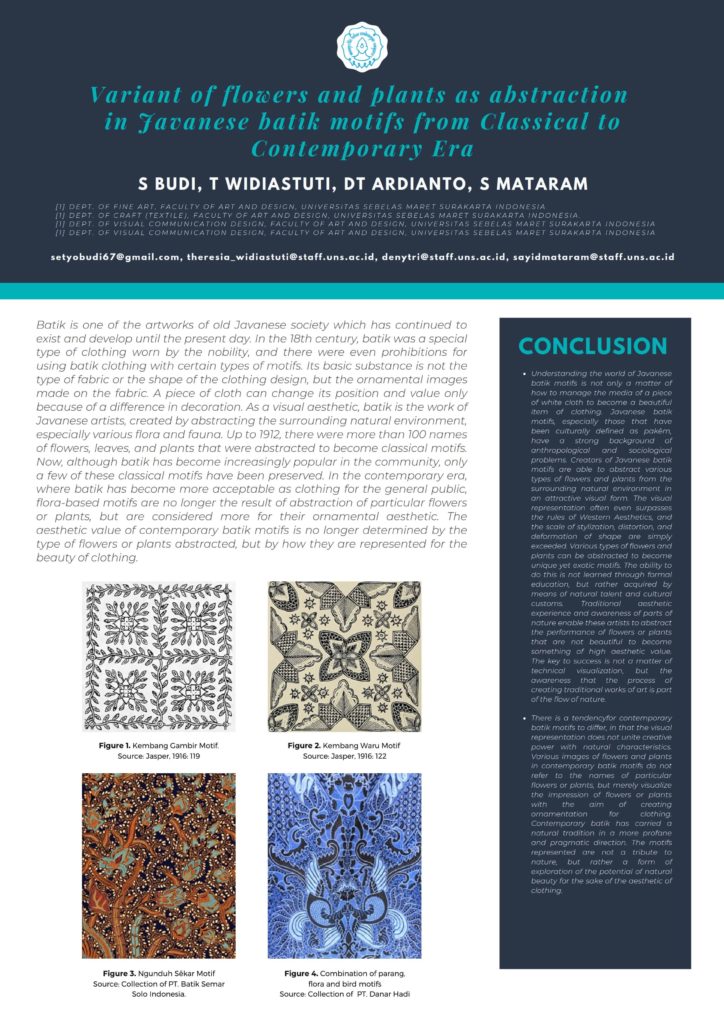Paper ID: 223
Variant of Flowers and Plants as An Abstraction Javatic Batik Motif from Classic to Contemporary Era
S Budi1, T Widiastuti2, D T Ardianto3 and S Mataram3
1Dept. of Fine Art, Faculty of Art and Design, Universitas Sebelas Maret Surakarta Indonesia
2Dept. of Craft (Textile), Faculty of Art and Design, Universitas Sebelas Maret Surakarta Indonesia.
3Dept. of Visual Communication Design, Faculty of Art and Design, Universitas Sebelas Maret Surakarta Indonesia
Email: Setyobudi67@gmail.com; theresia_widiastuti@staff.uns.ac.id;denytri@staff.uns.ac.id; sayidmataram@staff.uns.ac.id
Batik is one of the works of art of the old Javanese people who continue to live and develop until now. In the 18th Century, it became a special type of clothing for the nobility, and even became a prohibition for batik clothing for certain types of motifs. The basic substance is not the type of fabric or the shape of the clothing design, but the ornamental images made on the fabric. A piece of cloth can change its position and value only because of the difference in decoration. Batik as a visual aesthetic is the work of Javanese creators in abstracting the surrounding natural environment, especially various flora and fauna. Until 1912, there were more than 100 names of flowers and plants that were abstracted into classical motifs. Now, although batik is increasingly popular in the community, only a few of these classic motifs are preserved. Entering the contemporary era, where batik is increasingly accepted as clothing for the general public, flora-based motifs are no longer the result of abstraction from certain flowers or plants, but are more considered in their ornamental aesthetics. The aesthetic value of contemporary batik motifs is no longer what kind of flowers or plants are abstracted, but how to represent them for the beauty of dress.
